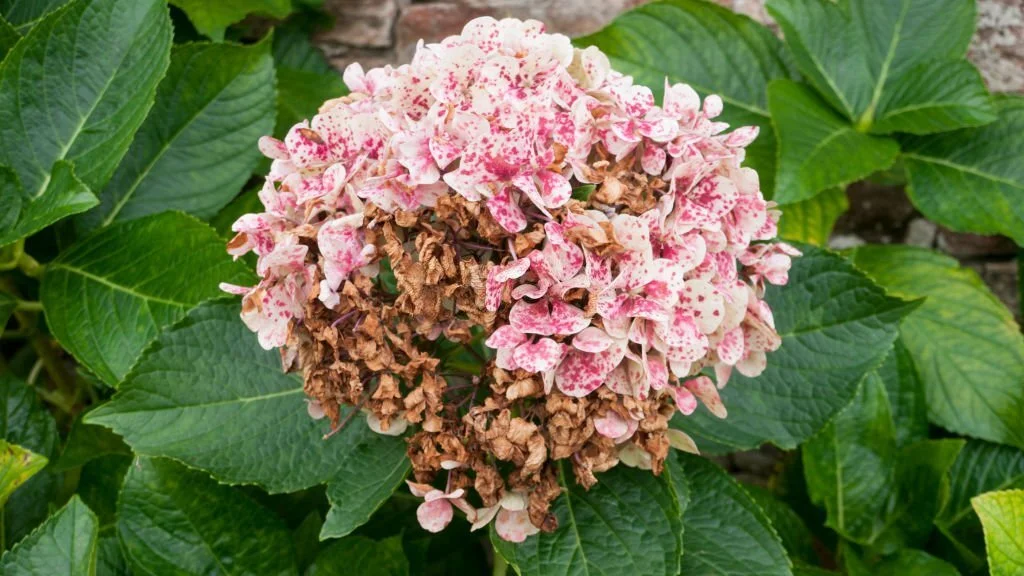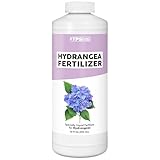Hydrangeas are renowned for their exquisite blooms and lush foliage, making them a cherished addition to gardens and landscapes. However, when you observe your hydrangea in a state of decline or showing signs of distress, it can be disheartening. In this guide, we’ll delve into the common reasons why your hydrangea may be dying and provide insights on how to address these issues effectively. Understanding the underlying causes is the first step in rejuvenating your hydrangea and restoring its vitality, ensuring it continues to grace your garden with its natural beauty.
- THE ORIGINAL: Holly-tone is the original plant food for all acid loving plants. Holly-tone’s natural organics break down slowly to provide a long-lasting reservoir of plant nutrients.
- FOR USE ON: Not just for Holly; Use Holly-tone organic fertilizer for azaleas, hydrangeas, rhododendrons, blueberries, evergreens, strawberries, camellias, and all plants that thrive in acidic soils.
- CONTAINS: Holly-tone is a rich blend of the finest natural & organic ingredients enhanced with our exclusive Bio-tone formula; 4-3-4 Fertilizer analysis with 5% sulfur. Holly-tone is environmentally Safe – No sludges or toxic ingredients.
- WHEN / HOW TO USE: Best to use Holly-tone fertilizer spring and fall on flowering & evergreen shrubs. For berries use in the early and late spring. Apply to the soil around the drip line of the plant and then water thoroughly. Holly-tone is ready to use and requires no mixing.
- FOR ORGANIC GARDENING: Holly-tone is approved for organic gardening; It is a registered Organic Input Material meaning it meets all requirements for organic production.
Improper Watering
- Symptoms: Hydrangeas are sensitive to water, and improper watering can have detrimental effects. Signs of inadequate or excessive watering include wilting leaves, drooping stems, and yellowing foliage.
- Solution: To maintain optimal soil moisture, water your hydrangea deeply but less frequently. Mulch around the base to help retain moisture and prevent rapid soil drying. Adjust your watering routine according to the weather conditions and the specific needs of your hydrangea variety. Proper hydration is crucial for its health and vitality.
Soil pH Imbalance
- Symptoms: Soil pH plays a significant role in hydrangea health and flower color. Hydrangeas may exhibit signs of stress if the soil pH is incorrect. For instance, blue hydrangeas may turn pink in alkaline soil, and pink varieties may lose their vibrant hue in acidic soil. Stunted growth and yellowing leaves can also be indicators of soil pH imbalance.
- Solution: Begin by testing the soil’s pH level using a soil testing kit. Once you have determined the pH, you can take corrective actions. For blue hydrangeas, lower the pH by adding elemental sulfur. To raise the pH for pink or red hydrangeas, apply lime. Maintaining the correct pH range ensures that your hydrangea thrives and displays the desired flower color.
Inadequate Sunlight or Excessive Shade
- Symptoms: Hydrangeas require the right amount of sunlight to flourish. When they receive inadequate sunlight or are exposed to excessive shade, they may exhibit signs of poor growth, sparse foliage, and reduced flowering.
- Solution: It’s crucial to plant your hydrangeas in an appropriate location that aligns with their specific sunlight requirements. Most hydrangea varieties benefit from receiving morning sun and afternoon shade. Ensure they receive at least 4 to 6 hours of indirect sunlight daily to promote healthy growth and abundant blooms. Adjust their placement if necessary to optimize their exposure to sunlight.
Understanding these factors, including soil pH and sunlight, is essential in addressing the potential reasons behind your hydrangea’s decline. By identifying and remedying these issues, you can nurture your hydrangea back to health, allowing it to flourish and adorn your garden with its stunning blooms once again.
Pruning at the Wrong Time
- Symptoms: Pruning hydrangeas at the incorrect time, such as trimming off flower buds or conducting untimely pruning, can have adverse effects on their growth and blooming potential. This may result in weaker growth or a reduction in the number of flowers.
- Solution: To ensure proper pruning, it’s crucial to learn the specific timing and techniques that apply to your particular hydrangea variety. Most hydrangeas benefit from pruning in late winter or early spring before new growth begins. Timing is essential to protect existing buds and promote healthy flowering.
Pests and Diseases
- Symptoms: Hydrangeas are susceptible to a variety of pests such as aphids, scale insects, and diseases like powdery mildew. These issues can weaken the plant, cause leaf damage, and hinder overall growth.
- Solution: Regularly inspect your hydrangea for any signs of pests or diseases. If detected, take appropriate measures to control the problem. This may involve the use of insecticidal soap for pest infestations or fungicides for fungal diseases. Swift intervention can prevent further damage and help your hydrangea recover.
By addressing the issues related to pruning and dealing with pests and diseases promptly and effectively, you can significantly contribute to the recovery and revitalization of your hydrangea. These proactive steps will ensure that your hydrangea can once again thrive, producing its iconic and captivating blossoms in your garden.
Soil Quality and Fertilization
- Symptoms: Poor soil quality or improper fertilization practices can lead to nutrient imbalances, impacting the overall health and growth of your hydrangea. Symptoms may include stunted growth, yellowing leaves, or poor flowering.
- Solution: Begin by testing your soil to assess nutrient levels. Based on the results, amend the soil with suitable organic matter or balanced fertilizers to provide essential nutrients. Follow a fertilization schedule tailored to your hydrangea’s specific requirements to ensure it receives the nutrients it needs to thrive.
- Hydrangea Fertilizer for Acid Loving Plants
Conclusion
Reviving a struggling or dying hydrangea requires a keen understanding of the various factors that can affect its health. By addressing issues such as improper watering, soil pH imbalance, inadequate sunlight or excessive shade, incorrect pruning practices, pest infestations, and soil quality, you can significantly improve the chances of nursing your hydrangea back to vibrancy.
Remember that hydrangeas are resilient plants, and with the right care and attention, they can rebound from a state of decline. By identifying and mitigating the root causes of their distress, you can enjoy their stunning blooms and lush foliage once more, enhancing the beauty of your garden or landscape. Your commitment to nurturing your hydrangea will be rewarded with a thriving and resplendent plant that graces your outdoor space with its natural elegance.





